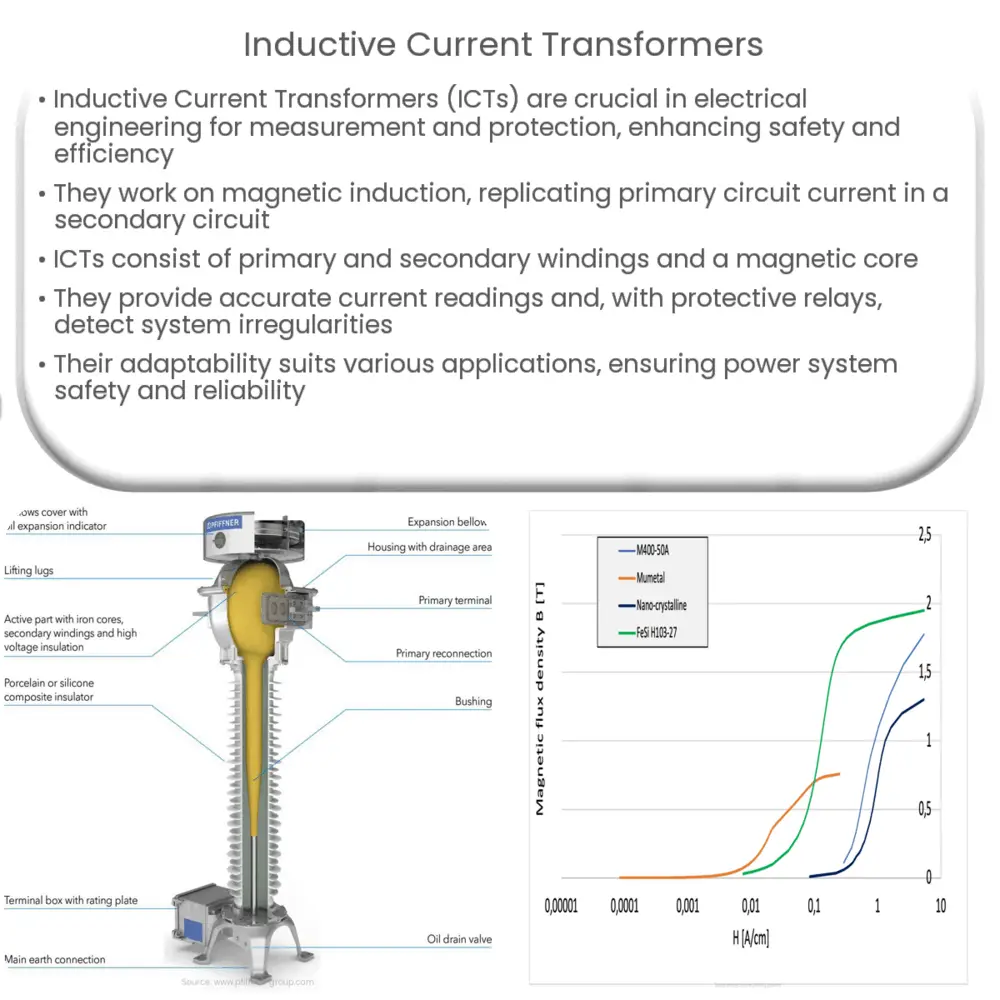Explore the role of Inductive Current Transformers in power systems, their construction, operation, applications, and benefits.

Introduction to Inductive Current Transformers
Inductive current transformers (ICTs) are essential components in the field of electrical engineering, playing a pivotal role in power systems. These transformers perform two primary tasks: measurement and protection, making them instrumental in ensuring the safety and efficiency of our electrical networks.
Understanding the Basics
At the most basic level, an inductive current transformer operates on the principle of magnetic induction, much like other types of transformers. They are designed to accurately reproduce the current in a primary circuit in a secondary circuit, scaled down by a known factor. This property makes them invaluable for measurement and protective relaying applications.
Construction and Operation
The typical construction of an inductive current transformer involves a primary and secondary winding, as well as a magnetic core. The primary winding, which usually consists of a straight-through conductor, carries the main current. Meanwhile, the secondary winding, where the output is drawn, is usually composed of many turns of fine wire wound on a laminated magnetic core.
- Primary winding: This part is connected to the high-voltage power circuit. The primary current or ‘main’ current passes through this winding.
- Secondary winding: This part is connected to the measuring instruments or protective relays. The secondary current, which is proportional to the primary current, passes through this winding.
- Magnetic Core: The magnetic core provides a controlled path for the magnetic flux generated in the transformer.
In operation, the magnetic field produced by the high current in the primary winding induces a current in the secondary winding. By carefully controlling the ratio of turns between the primary and secondary windings, the transformer can produce an accurately scaled-down current for measurement or protective purposes. The transformation ratio, defined as the ratio of primary current to the secondary current, is a critical characteristic of inductive current transformers.
Applications of Inductive Current Transformers
As mentioned earlier, the two major applications of ICTs are in measurement and protection. For the measurement purpose, ICTs are used in conjunction with measuring instruments, such as ammeters and watt-hour meters, to monitor the performance of electrical systems. In the realm of protection, these transformers, paired with protective relays, help detect any irregularities or faults in the system, such as overloads or short circuits, and initiate necessary actions to prevent any damage or interruption to the power supply.
Detailed Applications
Let’s delve into more detailed applications:
- Measurement: In this application, an inductive current transformer allows high current circuits to be measured with standard measuring instruments. It acts as a current transducer, transforming the high current to a manageable level for these instruments.
- Protection: ICTs are extensively used in the protection of power systems. They provide the necessary current inputs for protective relays, enabling the detection of abnormal conditions such as overcurrent, earth faults, or other electrical disturbances.
- Load Balancing and Power Factor Correction: ICTs, when used with proper equipment, can provide critical information for load balancing and power factor correction in power systems. By monitoring current levels, operators can make adjustments to the system to optimize efficiency and reduce power loss.
Benefits of Inductive Current Transformers
The use of inductive current transformers brings multiple benefits:
- Safety: They allow measurement and protection devices to be isolated from high voltage circuits, enhancing the safety of operating personnel and equipment.
- Accuracy: ICTs can provide highly accurate current measurements, which are essential for efficient system operation and reliable protective relaying.
- Flexibility: With different available designs and transformation ratios, ICTs can be tailored to fit a wide range of applications and system requirements.
Conclusion
In conclusion, inductive current transformers play a vital role in power systems, contributing significantly to the overall safety, efficiency, and reliability of our electrical infrastructure. They embody the principles of magnetic induction to measure and protect these systems effectively. ICTs, while appearing simple in their construction, deliver tremendous functionality and flexibility, showcasing their indispensable role in modern electrical systems. As we continue to develop and optimize power networks, the importance of inductive current transformers is likely to grow, underlining the need for ongoing research and development in this field.

